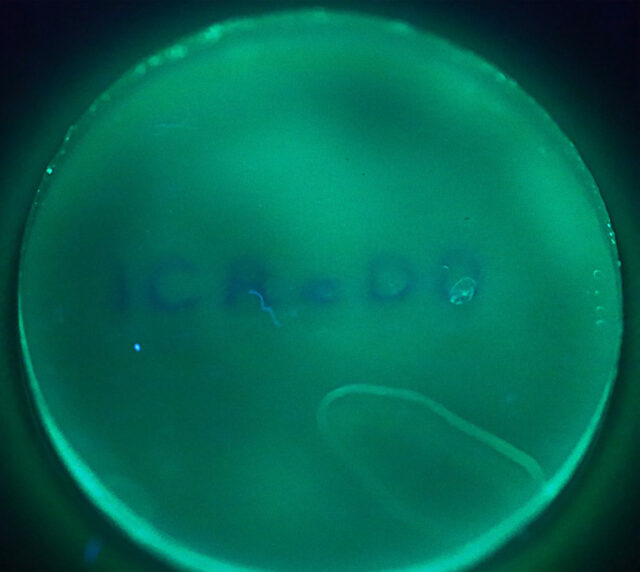
A collaboration between the groups of ICReDD Prof. Jian Ping Gong, Prof. Hajime Ito, Prof. Satoshi Maeda and Assoc. Prof. Mingoo Jin developed a method for being able to see molecular scale damage in double-network (DN) hydrogels in real-time via luminescence. This method involves incorporating prefluorescent probe molecules into the hydrogel by immersing the hydrogels in a solution of the probe molecule and then immersing them in water. Importantly, incorporating the probe molecules did not change the original structure of the gel. Stretching these gels induces nanoscale damage that triggers luminescence of the probe to get stronger only in the damaged locations. This technique is expected to have significance for material evaluation both in industry and the lab, as it enables monitoring molecular scale damage that can lead to macroscale material failure.
DN gels have a structure in which a softer polymer network is intertwined with a stiffer polymer network. These gels are first soaked in a solution of radical-trapping prefluorescent probe molecules to incorporate the probe in the gel. During stretching, mechanoradicals are generated when bonds break in the more brittle polymer network of the gels. These mechanoradicals can react directly with the prefluorescent probe to trigger luminescence.
Normally, these mechanoradicals are short-lived because oxygen in the ambient air traps the radicals, thus making the luminescence difficult to see. However, computations suggested that, in addition to mechanoradicals reacting directly with the probe, a radical transfer process involving oxygen also occurs that enables mechanoradicals to also cause radicals in the local surrounding area. It was predicted that these additional radicals could then react with the probe molecule, increasing the strength of the luminescence. Researchers experimentally confirmed the role of oxygen that was predicted by computations, observing increased luminescence of the DN hydrogel in ambient air compared to in a deoxygenated environment.
Since the technique developed here enables examination of nanoscale damage via luminescence without significantly altering the network structure of the original material, it shows promise as a novel method for evaluating mechanical damage in hydrogel materials.

(Zheng et al. Journal of the American Chemical Society 2023)

